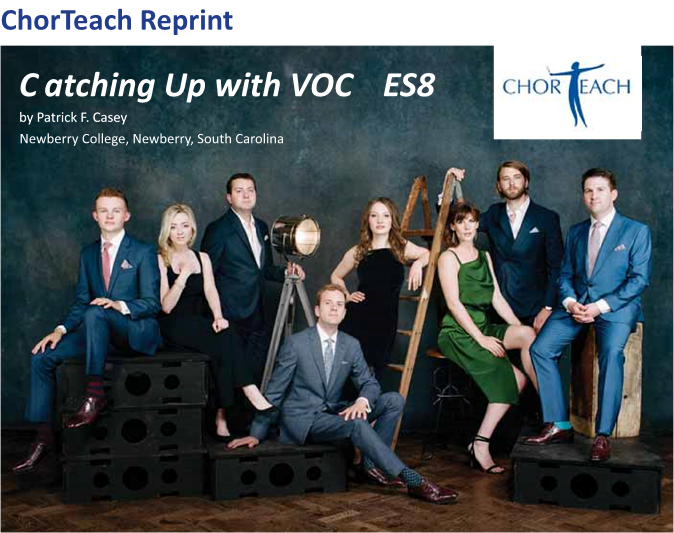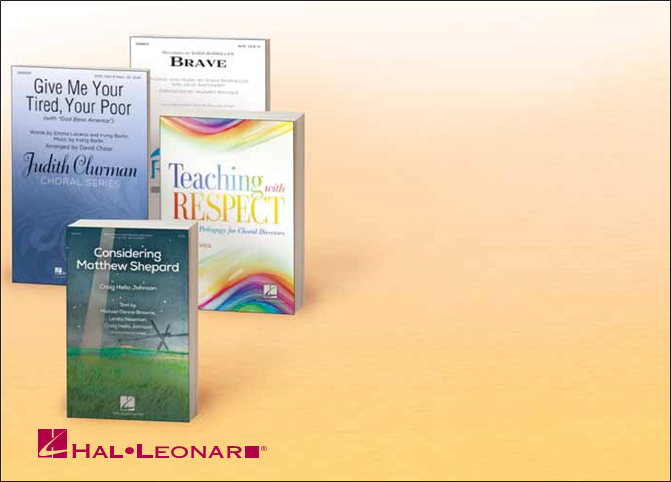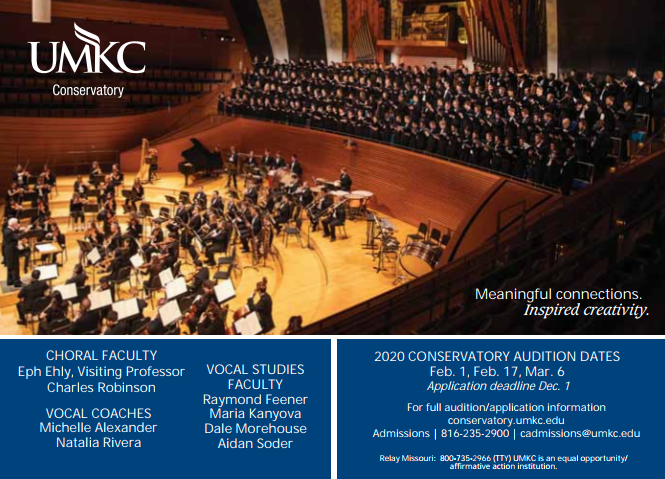ChorTeach Reprint
作者:中国合唱协会 时间:2020-07-10 点击:1034 评论:0
Editor’s note: The following article originally appeared in ChorTeach, Spring 2019.
As a lifelong instrumentalist heralding the virtues of chamber playing, I am increasingly drawn to the amazing world of vocal/choral creations. Since fi rst hearing VOCES8 perform in the winter of 2014, I have found this ensemble’s impeccable sensitivity and synchronicity to be completely engaging. I managed to visit with co-founder Barnaby Smith in Greenville, South Carolina, on November 13, 2018, after VOCES8
Barnaby, as the ensemble’s co-founder and artistic director, will you briefl y share the early history of VOCES8?
The group was actually founded out of a group of friends. We met when we were singing together in the Royal School of Church Music’s Millennium Youth Choir. When we were about college age, we got a little bit too old for that choir, so my brother, Paul, and I started to arrange sleepovers for our friends at our parents’ house, which was an excuse to socialize and have a bit of a party, and then, of course, do a lot of singing together.
We put on concerts for charity and sang for services at a local church or cathedral. A number of us had been choristers at Westminster Abbey, so it was great to keep in touch with old friends. That group of friends continued singing for a year or so and then was invited to a competition in Italy in 2005, a competition which looked, on paper, like a free holiday. All we had to do was go and do some singing. They would pay for our travel costs, our accommodations and our food, so we were set to have a great time.
When we got to Italy, we realized it was actually the International Choral Grand Prix and quite a serious competition. We set about doing lots of practicing. One of the categories was Jazz and Pop, so although we had taken a choir of twenty singers, we actually sang in that category with eight singers, and we won! From that experience, we received a couple of hundred concert invitations. That really was what gave us the ability to commit to an eight-voice ensemble and to see if we could turn it into a business.

I want to get your thoughts on VOC E S8’s approach to choral expression. In my observation, choral ensemble singers in the US seem to utilize vibrato in a less discriminant manner than ensemble singers in the UK . What general “choral sound” tendencies are you observing in other countries where you are performing? And, would you talk a bit about your own experiences and conclusions specifically regarding vibrato in the context of the breadth of music in the VOC E S8 library?
This is one of the hottest topics among choirs globally. I think we need to start by stating that vibrato is a very natural phenomenon. Every voice has vibrato, and there needs to be a realization that singing without it is not a default setting. It is indeed a skill and probably a skill that one has to learn. At the end of the day, to sing without vibrato, we must understand that we have to stop the voice from doing it. Our muscles have a natural tendency when we get the body into the singing position to want to vibrate. The speed at which these muscles will vibrate ultimately depends upon their makeup, in terms of density and shape. So, although some singers do have little vibrato—Andrea Haines in our group is a good example—every singer does have vibrato. To sing without it means that we are “holding the voice.” That in itself is not a problem if you do it in the healthiest way possible, which I think is to really try and hold it from the core rather than from the throat.
By stretching and adding extra support to the core muscles, we allow a greater level of tension, and that relieves a lot of the tension put specifi cally on the muscles that link to the hyoid bone and around the larynx in your throat. That being said, at the end of the day, you are still “holding” the voice, so I think the most crucial thing is that if you are going to sing a lot without vibrato, you must release that tension once you’ve performed with a good set of “warm-downs.”
In terms of the use of vibrato, I would say that in choral music, the preferred aesthetic tends to be a pure sound without much vibrato. That’s not to say always without vibrato, but rather, using vibrato specifi cally as a color. In VOCES8, for example, when we’re singing chordal music, we will try and sing with less vibrato, but when we are singing polyphonic music, we will use a bit more vibrato, because vibrato gives more color to the independent lines. We then certainly use natural vibrato for solos.
We always want voices in the group to blossom at certain moments, so having the ability to paint over your voice with a sort of magnolia whitewash, thus becoming a back-up singer, is an important skill. Equally important is to be able to bring out your line and shine with your own voice in its natural color. Vibrato is a very important part of that.

As one further example, when we are thinking about phrasing, we might use messa di voce, which is to straighten the voice out, create tension, and then as you get to the top of a phrase, release that tension, which naturally brings in a little bit of vibrato and a sense of shape. Having control of vibrato is important, and again, in the breadth of the music that we sing, we very much use it as a tool.
In terms of what I notice around the world the most, it’s the impact of solo-singing teaching versus choral teaching. A solo-singing teacher normally comes at the process of wanting the singer to be singing “healthily, freely and openly.” Not using vibrato is sometimes viewed as unhealthy for a singer. It inhibits the development of a voice. A choral director often goes completely the other way, insisting that singers be able to sing without vibrato a lot of the time. What can happen is that young singers get pulled in two diff erent directions. They begin to not know right from wrong in any given scenario. They end up not being able to control their voices properly in either direction.
My advice is that all singers study solo singing and develop their voices, maybe not studying exclusively heavier repertoire such as Romantic opera, because then “reigning that voice in” can be diffi cult when one’s natural tendencies are to sing Verdi and Wagner. Certainly, singing in the style of composers like Bach, Handel, and Mozart, for example, is great
ChorTeach Reprint for young singers to develop. In addition to that, working on control of vibrato by using one’s core muscles is my recommendation. The greatest singers have supreme control of their instruments from the softest, straightest sound, to the deepest, richest and most vivacious sounds. In my opinion, there’s no better place to learn control of the voice than in a choir!

I think everywhere around the world, in cultures where western choral music is sung, most listeners would prefer to hear composers like Eric Whitacre or Ola Gjeilo or John Tavener sung without vibrato. I do think we have hit this wall where some think singing without vibrato is “unhealthy.” At the end of the day, it doesn’t have to be that way as long as a singer does it correctly. In VOCES8, we see the use and control of vibrato as a specifi c skill, and we use it as a conscious choice of color, choosing when and how to employ it based on the type of music we are singing.
You spend a great deal of time interacting with school and community choral groups in the regions you are touring. C an you share some of the more frequent aspects of ensemble re-fi nement or expression you fi nd yourself addressing in these sessions?
This relates heavily to what I was saying earlier regarding the treatment of vibrato as an aspect of vocal color. I think the biggest question or issue that comes up in a lot of our choral sessions is this perceived diff erence between what it is to be a choral singer and what it is to be a solo singer. I really think there is no diff erence, that is to say, I think both of those uses for the voice require exactly the same skill set: an ability to demonstrate color with the instrument and control with the instrument whether that be at softer dynamic levels or when the instrument is operating closer to full power. There should be an ability to engage with the text and its meaning.
With many choirs, we end up hearing a performance that might be wonderfully balanced and blended but somewhat plain when it comes to expressing words and text meaning. I believe we should think about the techniques we might use as solo singers and how they can be employed within a choral environment, specifi cally, thinking about diction plus how we resonate and use our bodies as our instruments, how we present ourselves physically, or what happens if we direct the sound into the head for resonance compared with chest resonance. We can compare those items with the resonance we fi nd in our mask and what happens when we combine all of these things. I often talk to choirs who have sung in a manner that appears a bit like a pencil drawing when actually what we really wanted to hear was a full watercolor. Of course, the other big thing that comes into that conversation is the use of vibrato, which we discussed previously.
I would suggest that when we are talking about ensemble refi nement, we are trying to take these two opposing camps, “choir singing” and “solo singing,” and say that we need all of the skill sets that both camps expound and combine them if we are going to use our voices to the greatest eff ect possible. These two art forms can lead us to a much more colorful and engaging performance.
Another thing we talk about when working with choirs is the skill set specifi cally related to being a member of a small ensemble, as we are in VOCES8. We should think about things like how we sing without a director, breathing together, and what it means to create chamber music. Then within that idea, we should consider things like how we might tune using just intonation as opposed to equal temperament and how that is aff ected by the harmonic series. Then we should consider how we might tune added notes in the more complex harmonies and styles of contemporary music.
The most common theme in our work with other ensembles is that of using the voice in the most expressive manner possible to deliver the text and its meaning and how we can accomplish that with and without vibrato.

Your video performance of Elgar’s universally loved “Nimrod” from his E nigma Variations brought new attention to this text-added arrangement (L ux Aeterna) by John C amer-on, fi rst published over twenty years ago. C an you talk about that? I am also curious about whether or not VOC E S8 has embraced other works fi rst conceived instrumentally when text additions came some time later?
Yes, Nimrod was originally performed by our group as a suggestion of our record company, Decca, and it came out on our album LUX. I had always considered the work too diffi cult, if I’m honest, to sing live. We happened to be at a master class in Germany where they had put it on the repertoire list for their choir to sing. Whenever we off er a master class, I try and employ a method in which the choir will sing to us, and then I explain something we’re hoping to fi x and have VOCES8 demonstrate it. Then everyone takes part in performing the work. So, after we had worked on Lux Aeterna as a group (with the two choirs), we performed the work alone, and I thought, “Oh, that was really quite good.” And so we decided to have another go at it in the Greshman Centre, and it came out very, very well. I would love to say that there is more to it than that, but there isn’t really. Obviously, it is a very well-known work that touches people very deeply, and for that, we can only thank Edward Elgar.
It can be very diffi cult to transfer instrumental music into vocal arrangements, which is quite funny,because as singers, we spend our lives considering how an instrument might play a particular phrase that we are singing, and also vice versa. I know when instrumentalists study, a lot of the time they think, “How would a singer sing this?” Yet, it’s quite diffi cult to fi nd music that really fi ts easily between a sort of instrumental chamber group and an a cappella vocal group like ours. That’s not to say that we don’t try, but of course when you think back to the music of people such as J. S. Bach, his writing was very instrumental. And so, the colla parte style of performance, where an instrument might join a voice, was created in order to help the vocalists (Barnaby laughs and continues), if they couldn’t perhaps get their chops around the notes!

Generally speaking, we don’t take on music that’s written specifi cally for an instrumental ensemble and turn it into music for voices. Other than that, I suppose when we create arrangements of big-band-stylemusic, we are trying to create the horns think about in that genre withand the saxes and those types of so norities which would speci cally the big band. Having said that, when making colors as an ensemble, we do try to equate them with instrumental and symphonic color, in order that we can expand our palette to be as colorful as possible.
Something that springs immediately to my mind is the opening of Shenandoah, where we try to create a sort of symphonic sound, with lush, rich string textures. And, I think, as a vocal ensemble, if we are ever going to create the widest range of colors possible, we should try to think of all know the multitude of diff erent colors you can it in an instrumental manner. That could bequite useful because we get if you have a full symphony orchestra in front of you.
As a kind of simile or metaphor, it’s quite a nice thing to be thinking, “Well I’m going to sound like the winds here,” or, “This is particularly pastoral, should we try and sound like the fl utes and the oboes?” for example, or, “This is rich and lush, let’s try and sound like a big string section.” So, we will think of it that way, but actually, taking an instrumental work and turning it into a vocal work is not something we do too often.

Below is a preview of the articles you will nd in the latest issue of available to ACDA members online at acda.org/chorteach. Look for the all-new coming in the next issue! There will be a new cover, new table of contents, and new interior design.
“Stronger When We Work Together” by Michael Jeff rey
Learn more about the benefi ts of collaboration from this author’s personal account with his own choirs.
“I H eart (L ove) Sight Singing!” by Jane Vanderhoff
The author of this article asked singers to write down their thoughts about sight singing and shares them in fi ve main categories.
“Ten C ommandments for the C hildren’s C hoir Director” by Henry Leck
This article breaks down ten important elements of being a children’s choir director.
“The Care and Preservation of the Voice” by Tony Thornton
In this article, the author shares twenty tips to help conductors and singers maintain excellent vocal health throughout the year.
